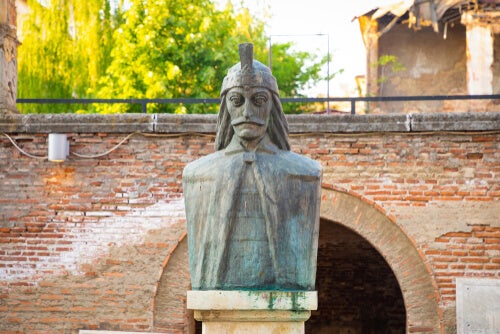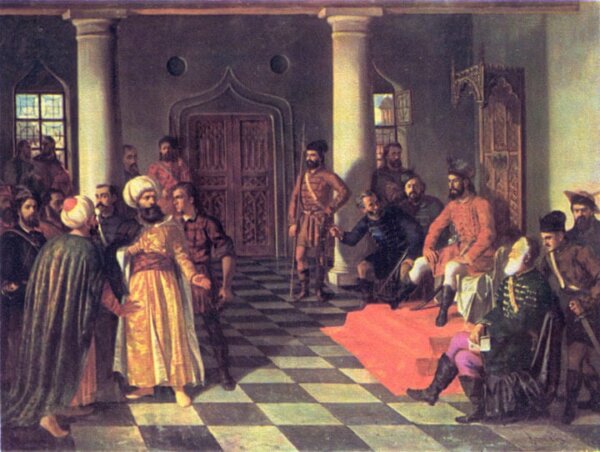The Legend of Dracula: Did He Really Exist?

In 1897 in London, Irish author Bram Stoker published Dracula. It was a book that entered into the history of literature and that forged the legend of Dracula.
The story is obviously fictional, but its inspiration has disturbed researchers for decades. Was there ever a character so infamous and sadistic that he could be compared to a vampire? We’ll never know for sure. However, there are indications that Stoker chose to base his novel on the current Romanian national hero.
More than four centuries earlier, Vlad Tepes, son of Vlad II Dracul, was born in Sighișoara, Wallachia. His father’s nickname refers to the Order of the Dragon, of which he was a member.
In time his son was nicknamed Draculea (son of the dragon or demon). Stoker’s “Dracula” may well have its origins in this character. His biography is fascinating, and its parallels with the vampire count are clearly evident.

Wallachia, the frontier of Europe
Wallachia is a Balkan region that occupies the center of modern-day Romania. In the 15th century, it was part of a group of territories in dispute between the Holy Empire and the Ottoman Empire. For practical purposes, it was a border of Christian Europe against Islam.
Intrigues and betrayals of the court were a constant theme in Vlad’s life, as well as the alliances or confrontations with their Ottoman neighbor. In his childhood, he was delivered as a hostage to the Turkish court, a time when he got to know the torture that characterized his government: impalement.
The truth is that achieving the throne of the principality inherited from his father wasn’t an easy path. Despite Turkish support, his opponents dethroned him that very same year.
In a complicated balance of powers, he regained the throne in 1453, five years after his expulsion, only to lose it again in 1461 and then regain it fleetingly ten years later. During that time, he experienced captivity at the hands of his enemies, the wavering support of Moldavia, Hungary, and Turkey, and even changed his religion for political interests.
The legend of Dracula
But if Vlad Tepes was known for something in his time, it was for this horrific punishment that he favored the most. So much so that he received his macabre nickname from this practice: Vlad the Impaler.
He carried out this horrific practice so many times, that people calculate that he impaled eighty thousand people, counting the captured Turks among them. This undoubtedly contributed to his fame, even punishing entire villages for unresolved crimes.
The chronicles tell of the moment when a Sultan who was preparing to attack Wallachia withdrew when he saw the stake forest, unwilling to face the devil himself.
This wasn’t his only feat as, in the campaigns of 1461, he set fire to crops and poisoned many wells in order to defeat his Turkish rivals. After impaling many of his prisoners, he decided to send two sacks of noses and ears to the king of Hungary.
The tragic end of his wife, who committed suicide during a Turkish attack, or the humiliating death of Dracula at the hands of a traitor, may also have fed the imagination of Bram Stoker. Few historical characters have such a convulsive history or proved to be so ruthless in order to keep power.

Vlad the Vampire
Many researchers agree that Stoker wasn’t the first to equate Dracula with a vampire. These creatures are common in the Slavic and Balkan traditions. They represent the quintessence of cruelty, and, like their pseudonym, they’re related to dragons or demons.
The lack of a tomb contributed to the myth. Although he was supposedly buried at Snagov, the truth is that his body was never found. Perhaps the Irish author embodied some oral tradition in the legend of Dracula.
“Hated and feared. I am dead to the whole world. Listen to me. I am the monster that living men would kill. I am Dracula.”
–Dracula, Bram Stoker-
The teaching of Dracula
As good literature often does, this novel has the capacity to make us reflect on reality and fiction. The description of the character and his historical counterpart fit perfectly with that of a psychopath.
The moral interpretations of the past may be useless, but the story of Dracula is fundamentally a biography of human cruelty. We can draw fascinating lessons even from the most bitter episodes of history.
Undoubtedly, Vlad Tepes never practiced vampirism, not literally, but his government, like that of many princes of his time, fed on rivers of blood.
All cited sources were thoroughly reviewed by our team to ensure their quality, reliability, currency, and validity. The bibliography of this article was considered reliable and of academic or scientific accuracy.
- Stoker, Bram (1994) Drácula, Cátedra
- Ralf-Peter, Märtin (1983) Conde Drácula, historia y leyenda de Vlad el Empalador, Tusquets.
This text is provided for informational purposes only and does not replace consultation with a professional. If in doubt, consult your specialist.








